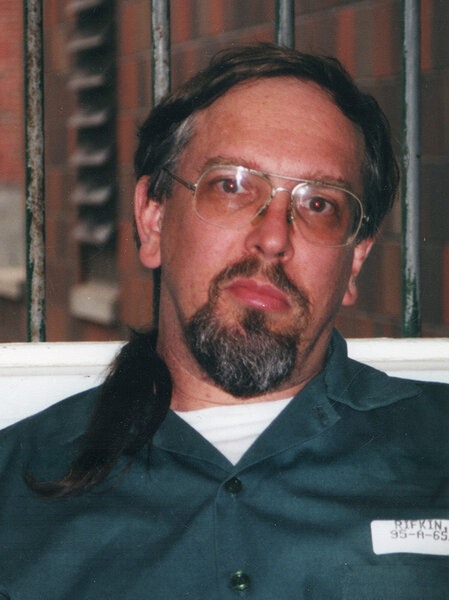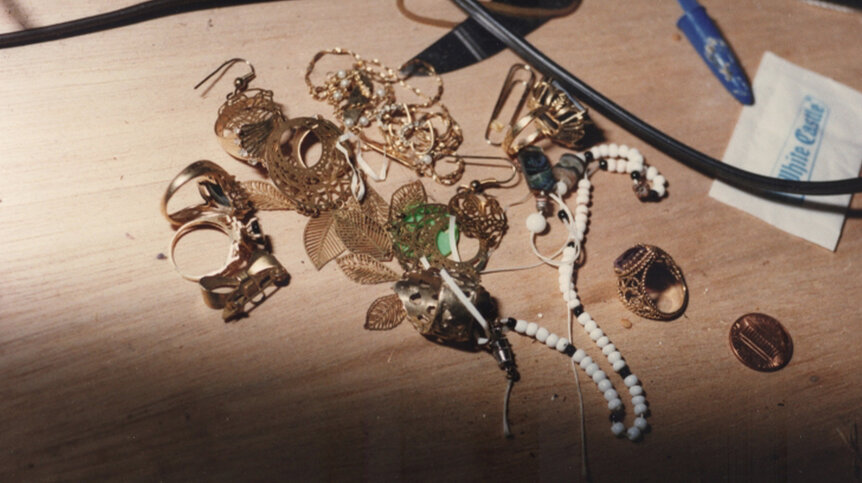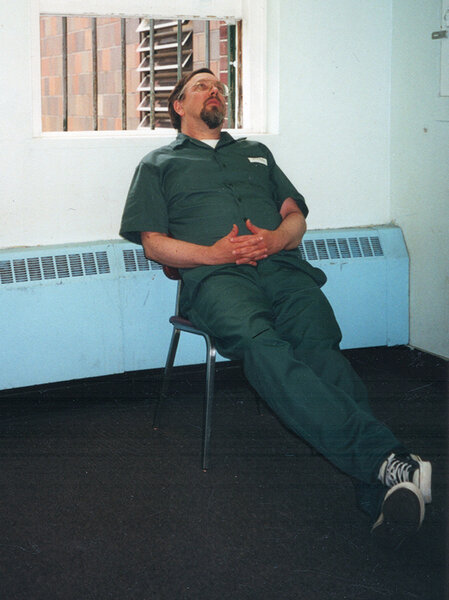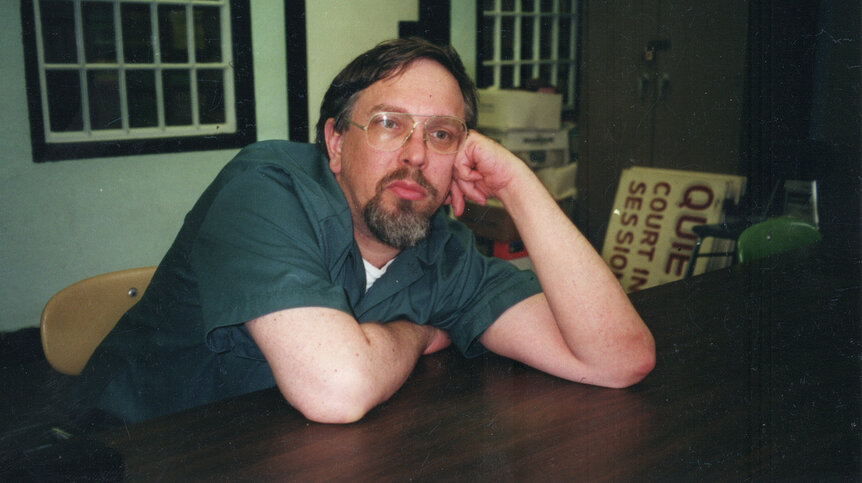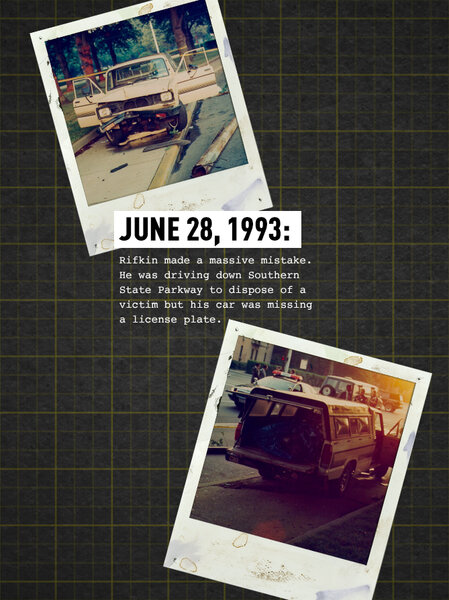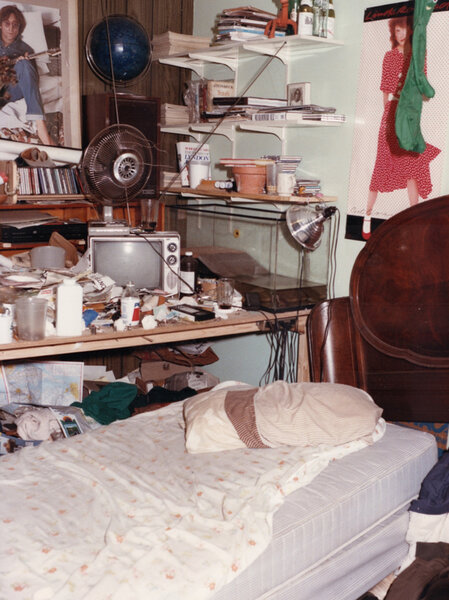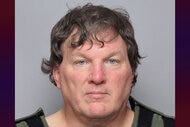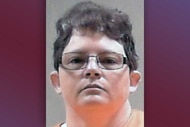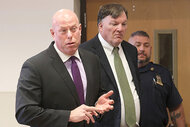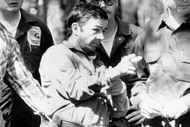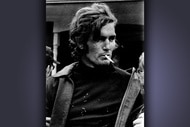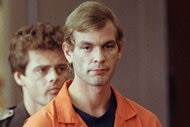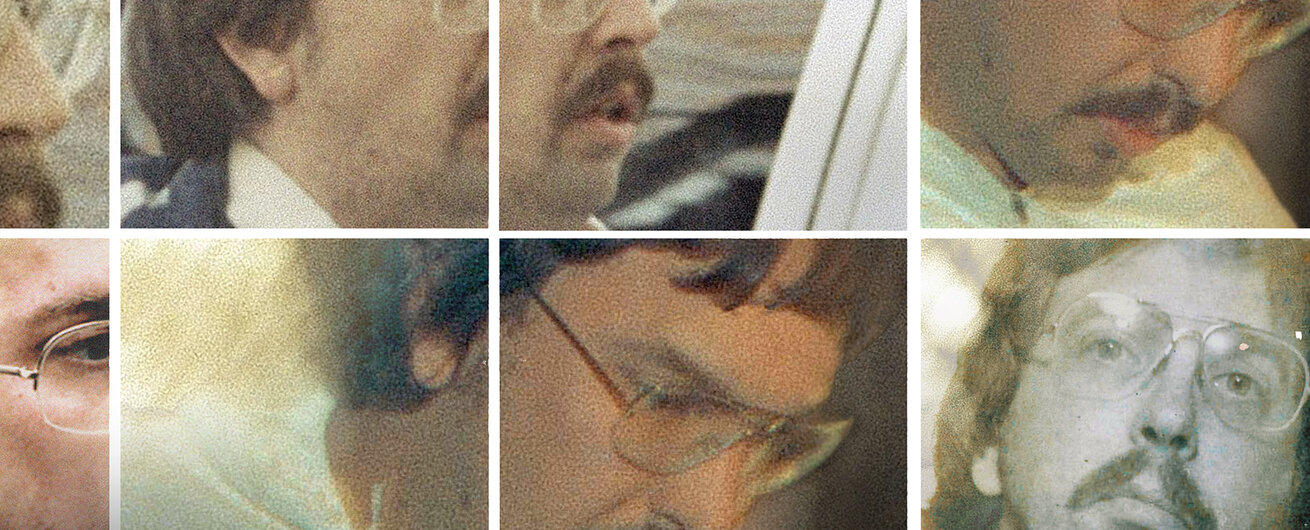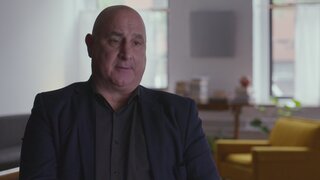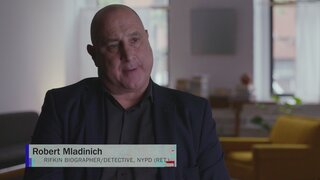Create a free profile to get unlimited access to exclusive videos, breaking news, sweepstakes, and more!
'If I Didn't Kill Them, They Would Have Died Anyhow': How Joel Rifkin Evaded Capture For Years
Joel Rifkin murdered 17 women, making him New York's deadliest serial killer. But his eventual capture was a total accident as the serial killer wasn't even on police's radar. Why not?
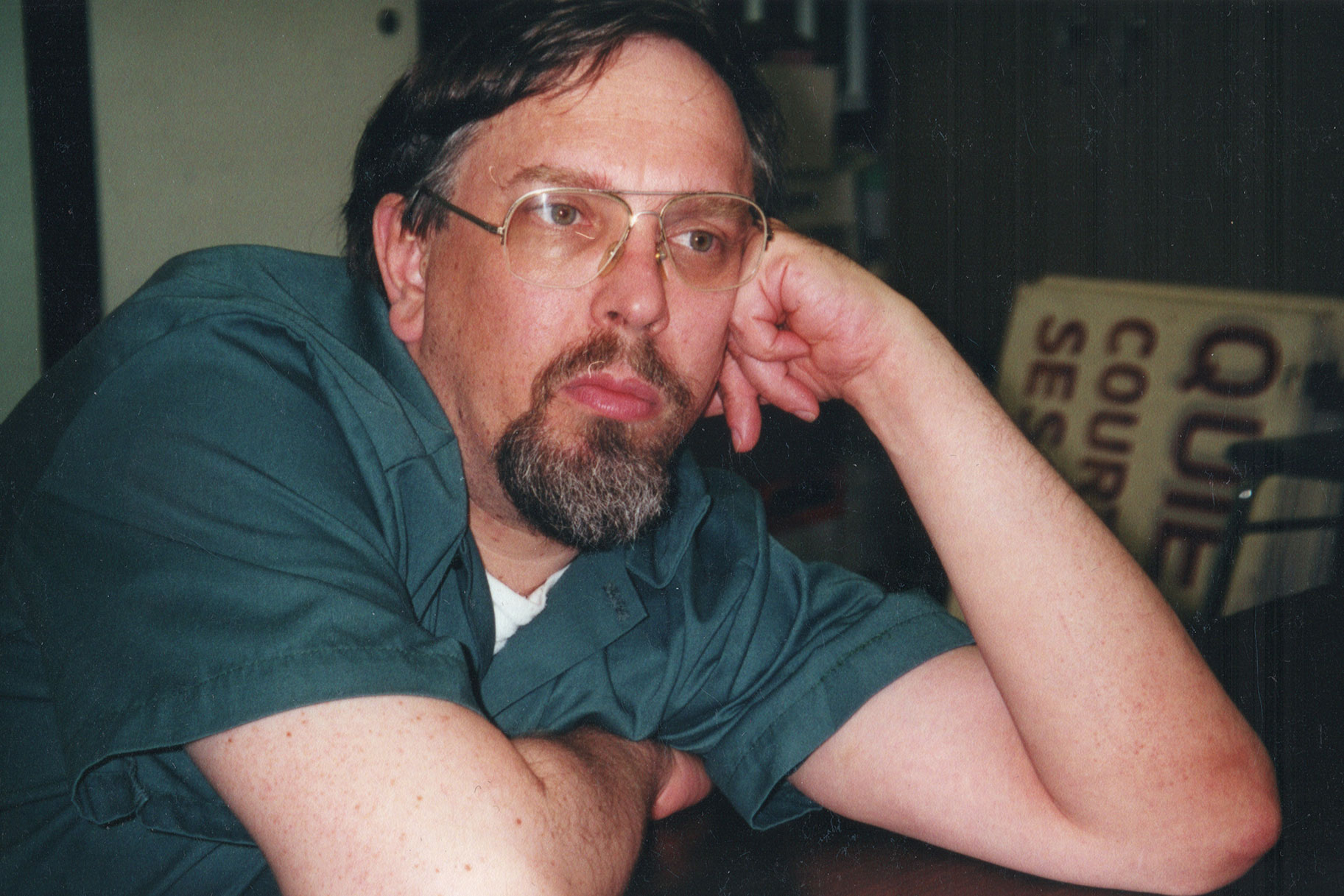
From 1989 to 1993, a serial killer stalked New York City. Seventeen women in total were murdered by this shadowy figure — but police at the time weren't even aware he existed.
Joel Rifkin was someone who was used to being invisible. He managed to completely slip by unnoticed while committing the most vicious rampage New York had ever seen, capitalizing on his own non-threatening anonymity and pursuing victims who tended to fall through the cracks of society. And if he hadn't been caught, he likely wouldn't have stopped, he admits in Oxygen's new special, "Rifkin on Rifkin: Private Confessions of a Serial Killer," airing Saturday, April 10 at 7/6c on Oxygen.
Seven years after he was sentenced to life in prison, an old college friend of Rifkin, unable to understand how a decent-seeming person hid such a twisted side, went to visit him at Attica Correctional Facility. The recordings of their conversations are the focus of the special, as Rifkin's horrific killing spree is explored. How did Rifkin become such a vicious murderer?
What Drove Joel Rifkin To Kill?
Rifkin didn't display the typical signs of a budding murderer. He didn't wet the bed or torture animals or start fires. Instead, he was a rather meek, unassuming child. He struggled with confidence and lacked natural athletic ability, a trait that frustrated his father endlessly, according to "Rifkin on Rifkin."
"He always seemed like he was slower or a step behind," Fred Reiter, who lived next door to Rifkin in East Meadow, New York growing up, recalls in the special.
Rifkin was bullied throughout his school years, an experience that left him feeling angry and isolated. It seemed like the only people who noticed him were his childhood tormenters, he thought. It didn't help matters that he was constantly seeking his father's approval, too. Rifkin just didn't excel in academia or sports, and so he struggled with feeling like a disappointment to his dad.
While psychologists have theorized the emotional distance from his father and the bullying may have contributed to his transformation into bloodthirsty killer, Reiter emphasizes in the special, "In every high school, there's the kid that's the last to get picked. In every high school, theres a kid that doesn’t get girls, but they don’t go ahead and murder 17 women."
Before Rifkin left for college, he drove to New York City and picked up a sex worker for the first time. The experience soon exploded into a full-on addiction, as he blew through all his money picking up hundreds of sex workers. This addiction crippled him, as he had to to leave college before finishing and was unable to ever really hold down a job. His rage and self-loathing only grew, according to the special.
'They Weren't Throwaways' — Rifkin's Victims
In March 1989, Rifkin, who admitted he had often fantasized about strangling women during sex, turned his disturbing ideas into reality.
He had picked up a sex worker named “Susie,” according to a 2013 The Associated Press article. As his mother was out of town, he brought her back home. After sex, he reportedly bludgeoned her with a Howtizer artillery shell and strangled her to death. He then dismembered her body, leaving her head at a New Jersey golf course, where it was quickly found, according to the AP. Still, it would take years for authorities to formally identify her, as "Susie" wasn't her real name. She was actually a woman named Heidi Balch, who had used various identities throughout the years.
That first murder gave way to many more; he killed 16 more sex workers, often dismembering their bodies and disposing of them in the New York area.
Rifkin's other victims include Tiffany Bresciani, Julie Blackbird, Lauren Marquez, Mary Catherine Williams, Barbara Jacobs, Yun Lee, Maryann Hollomon, Leah Evens, Violet O’Neill, Mary Ellen DeLuca, Lorraine Orvieto, Iris Sanchez, Jenny Soto, and Anna Lopez, according to a 2018 Newsday article. Two other victims remain unidentified to this day.
"Leah was not a throwaway," Evans' friend tearfully says in the special. "None of them were throwaways."
How Rifkin Avoided Detection
Rifkin was never on authorities' radar. He specifically killed women who were less visible in society. Many of the victims were never even reported missing, and so police were unaware of the scope of the killing spree. They didn't realize one man was targeting sex workers in New York City.
“[Sex workers are] easy because they travel a lot. They can disappear for months,” he told CBS New York in 2011.
He expressed a similar view in an interview with the New York Daily News in 2010: "No family ... "They can be gone six or eight months, and no one is looking," he said.
Of course, many of the victims had concerned loved ones who were desperately looking for them after they vanished — however, many of the bodies weren't recovered until after his capture, so police weren't making a connection in the cases.
Rifkin was also able to hide in plain sight by switching up his modus operandi: He disposed of the bodies all over New York state, from a Brooklyn creek to an Orange County town, the New York Times reported in 1993.
Some he hid in oil drums, others in blocks of concrete. Some were left abandoned in fields. Some were dismembered, others were not. Most killers stick to one method of disposing the bodies, but his mixture made it easier for him to go undetected, according to the special.
Rifkin's Arrest And Downfall
Rifkin's downfall came about simply because of a "25 cent mistake," as he told the New York Daily News. On the early morning hours of June 28, 1993, three days after he had killed Bresciani, Rifkin stashed her body in his car's trunk and headed down the Southern State Parkway to dispose of her, the New York Daily News reported at the time.
He wasn't driving erratically or doing anything odd. Police just noticed him because his vehicle was missing a license plate. When they signaled for him to pull over, Rifkin kept driving. A low-speed car case ensued for about 20 minutes, until Rifkin lost control of the car and crashed into a utility pole in Mineola, according to the paper.
When police approached the vehicle, they noticed an absolutely overwhelming odor, according to Newsday. They opened the truck and found Bresciani.
At the police station, Rifkin was asked if he had killed anybody else.
“He kind of leaned back and said, ‘One or 100, what’s the difference?’” Eugene Corcoran, the state police lieutenant who supervised the investigation, recalled, according to Newsday.
Rifkin launched into great detail about each of the 17 women he killed, even drawing maps of where the bodies were.
"We kept asking him, 'What about this one?'" a law enforcement source told The New York Daily News at the time. "And he kept saying things like, 'I killed that one. That one was easy.' This guy seems like the real deal."
When authorities searched Rifkin's East Meadow home, they found all the evidence they needed: clothing, jewelry, driver’s licenses, library cards, and credit cards belonging to approximately 10 women. With this information, they were able to identify even more of his victims, the New York Times reported. They also found a blood-stained wheelbarrow and chainsaw at the residence.
Rifkin was eventually sentenced to 203 years in prison for his horrific string of murders. Prison is where he belongs, Rifkin says in the special. He was only caught because of a small mistake, and he would have kept killing, he admits.
"Where I am right now today, I know this is the best place for me," he says.
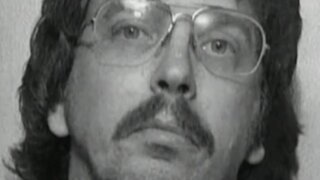
For more on Rifkin, watch Oxygen's special “Rifkin on Rifkin: Private Confessions of a Serial Killer,” airing Saturday, April 10 at 9/8c on Oxygen.
